An athlete getting ready for a run, or a running focused athlete, will utilize a foam roller differently than a strength-focused athlete. Their body and muscles are being used in a different manner compared to the regular lifter, so they need to focus on different areas due to the stress of constant foot strike while running.
[Ready to get rolling? Check out our special deal on the BarBend 2-in-1 Foam Roller today!]
To warm-up for a run with a foam rolling sequence, we sought out Matt Moskowitz, Head of Training at Hell’s Kitchen Wellness, to learn more about his go-to movements for these purposes. Check out the video below, and the additional descriptions for each step of the sequence below.
Note: All motions shown are for informational purposes only. The information in this article and video is not meant to prevent or cure any disease or injury. It’s always a good idea to consult with a medical professional or trainer before attempting any new training methodology. If you experience any sharp pain while foam rolling or exercising, discontinue movements immediately.
Runners who train at a high volume especially should consult with a medical professional before undertaking any new recover or mobility practice.
[There are multiple ways a foam roller can help your progress. Check out our ultimate guide to foam rolling to learn all the ways it may help.]
Understanding How Running Stresses the Body
The foam rolling sequence Moskowitz uses is designed to prep and ready a variety of muscles and areas that are used during running. We begin working from the legs up and finish with the torso. Each movement is used to prep the body for proper running posture and readiness. Check out some of the areas the foam rolling sequence hits below.
- IT Band
- Gluteus Maximus
- Gluteus Medius
- Hip Flexors
- Lower/Mid/Upper Back
Moskowitz pointed out that a long-distance, or high level running athlete (7+ miles a day) will need completely different methods and movement series for warming up. He advises for these athletes to seek a professional to learn proper ways to prep their body, because the state of their musculature and build will be much different than the casual runner.
Pre-Run Sequence
1. Long IT Band Stretch
The first movement will position the athlete on their side with the roller under them at knee level. From here, the athlete will bring their bodyweight over the roller, so they’re positioned sideways.
At this point, the athlete will begin to roll up to the greater trochanter (bony hip landmark) and down the roller on the side of their leg to the knee working to hit the IT band. As the athlete moves the roller up the leg, then they’ll also bring their torso more upright to further stretch the IT band. They perform this movement for 30-40 strokes.
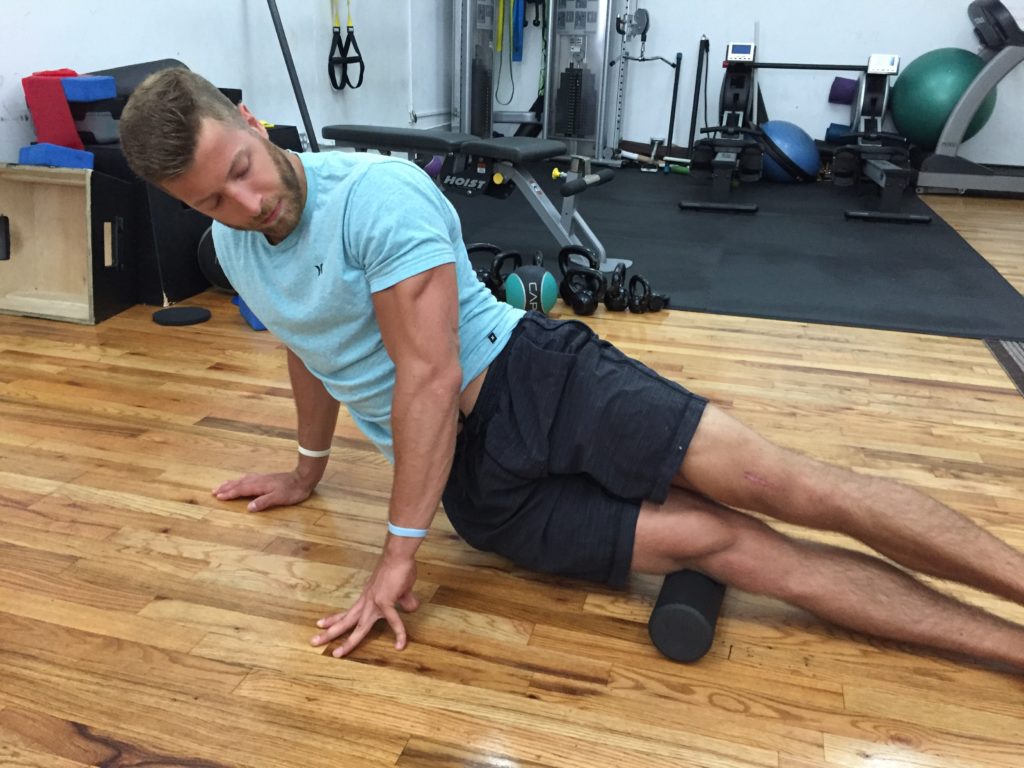
2. Deep Glute Focus
After an athlete has performed 30-40 IT band rolls, they’ll position themselves seated on the roller, leaning into one glute. The athlete will cross their offset leg and shift their weight into the glute to apply pressure with the roller.
Once an athlete finds their balance and has the proper amount of tolerable pressure applied, then they’ll begin to roll on a six inch track. Moskowitz advised to have athletes roll from the upper glute to the base of the glute (origin of hamstring) for 30-40 strokes.
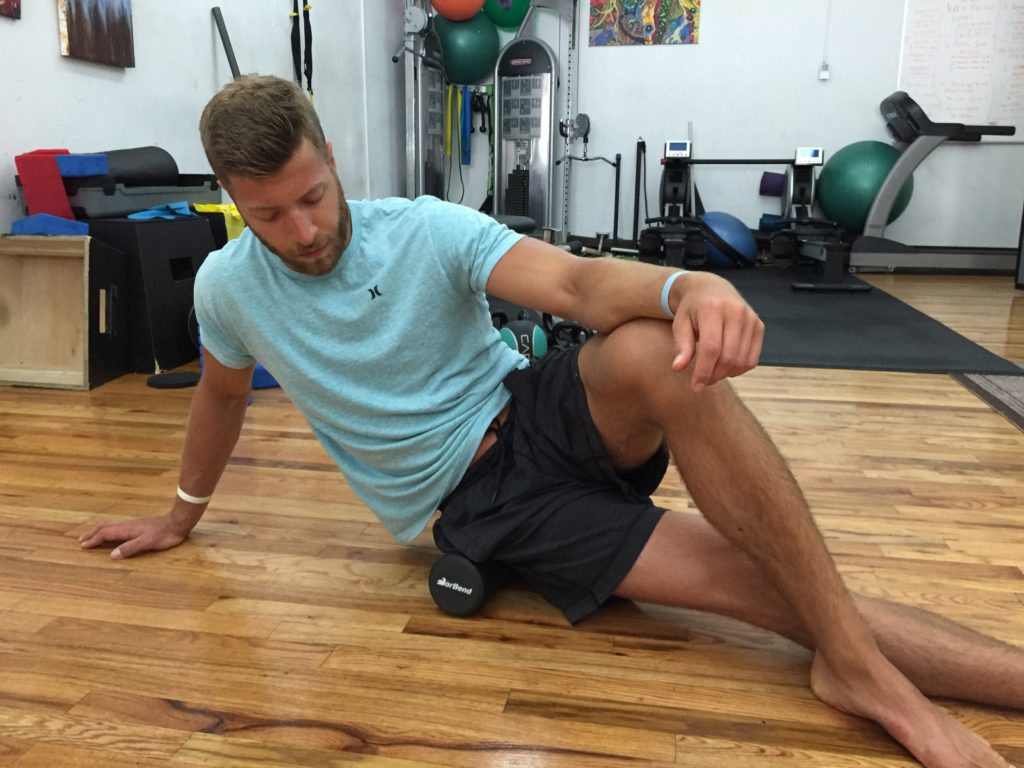
3. Hip Flexor Roll
When finished with the glute roll, the athlete will then bring their torso closer to the ground and position the roller on the hip flexor. The athlete will stabilize their bodyweight and begin to rock back and forth gently on tight, or tender areas of the hip flexor.
Ideally, the athlete will extend their furthest arm from the ground and move it with the rocking of the body to apply more pressure, and create balance. Moskowitz stated that their should be no bone contact, so if the roller is pressing into the hip bone, then position the roller slightly higher on the body. They athlete moves back and forth gently for 30-40 rocks.
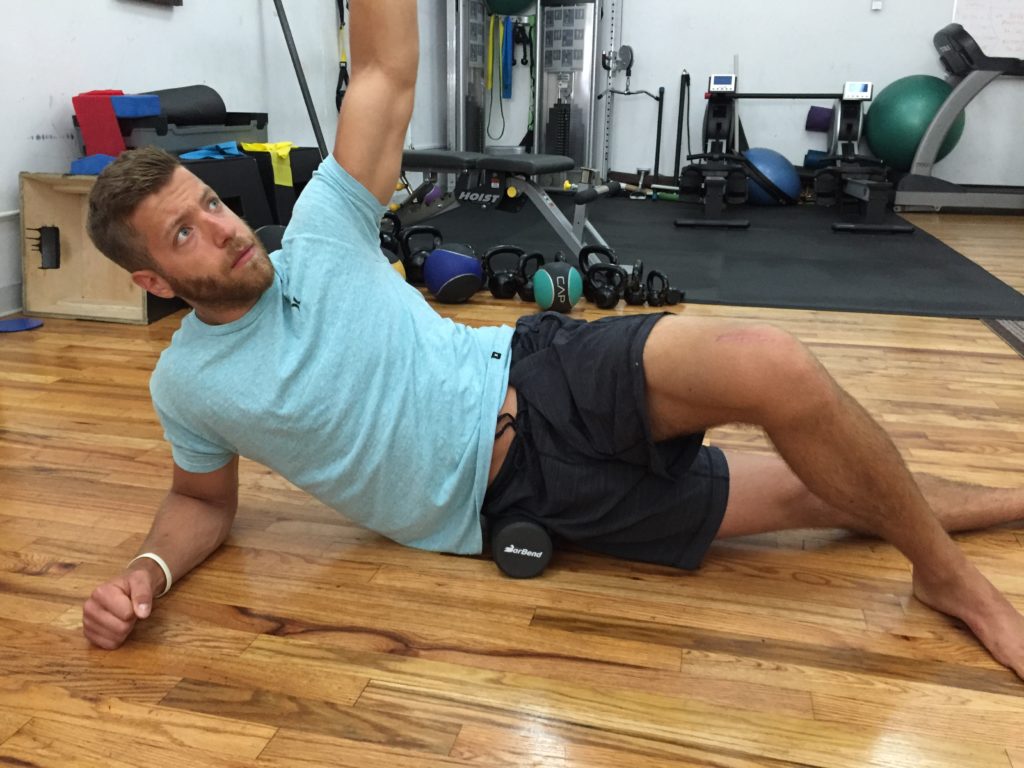
4. Mid-Thoracic Lengthening
Begin the final movement with the athlete’s butt positioned on the floor and the lower back in contact with the foam roller. From here, the athlete will cross their arms and begin to lift their butt off the floor engaging the core, while moving the foam roller up the torso.
An athlete will keep their butt off the floor and roll up and down from the lower thoracic to the bottom of the shoulder blades. The athlete performs this movement for 20-30 strokes.
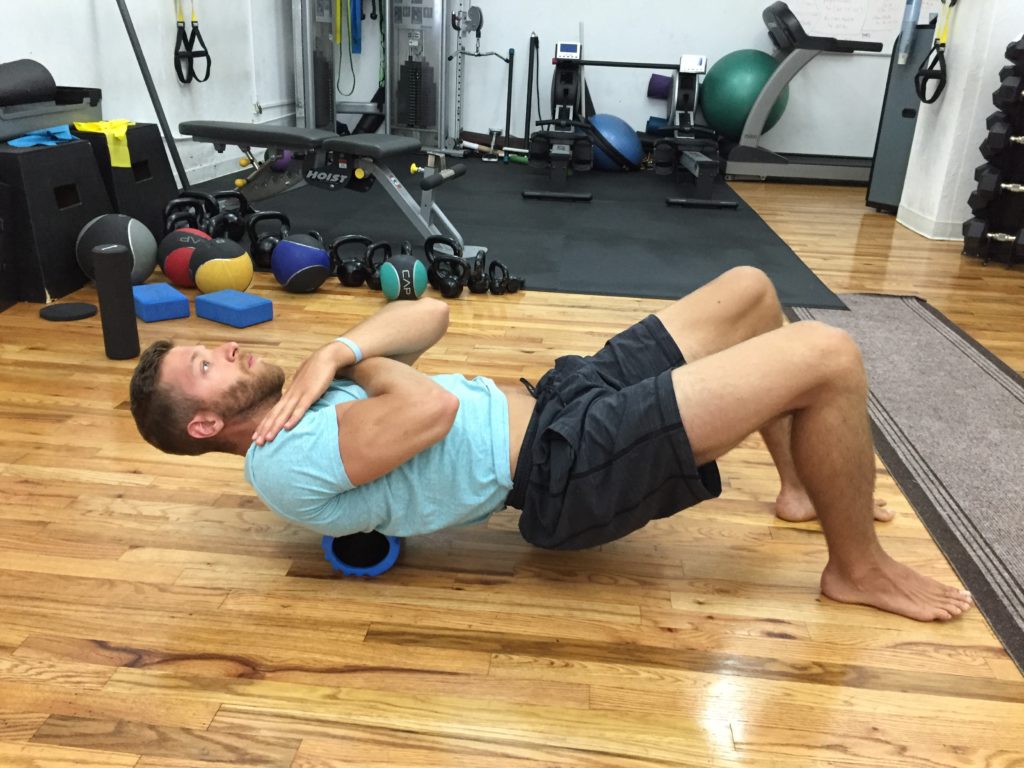
If an athlete wants to target the deeper musculature of the back, Moskowitz suggests extending the arms overhead. He states that doing so helps clear the shoulder blades from the roller and provide the athlete with the ability to target the rhomboids, among other deeper muscles.
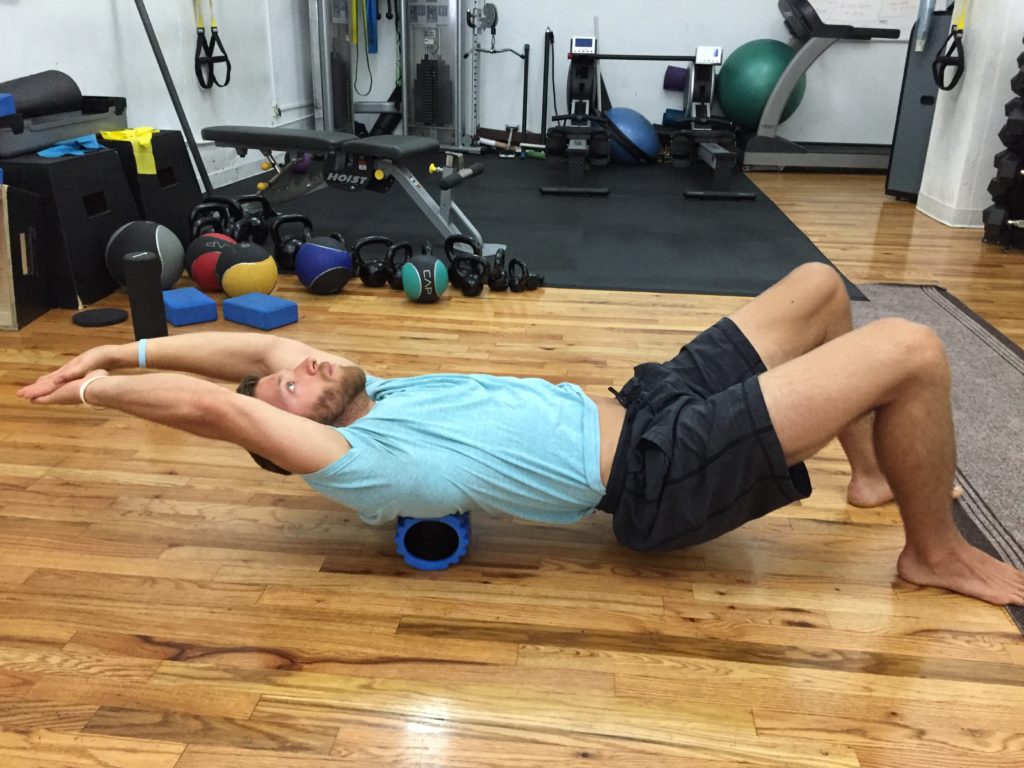
Similar to the first mid-thoracic lengthening stretch, the athlete will perform this movement from the upper back to the lower thoracic. Moskowitz says 20-30 strokes will suffice.